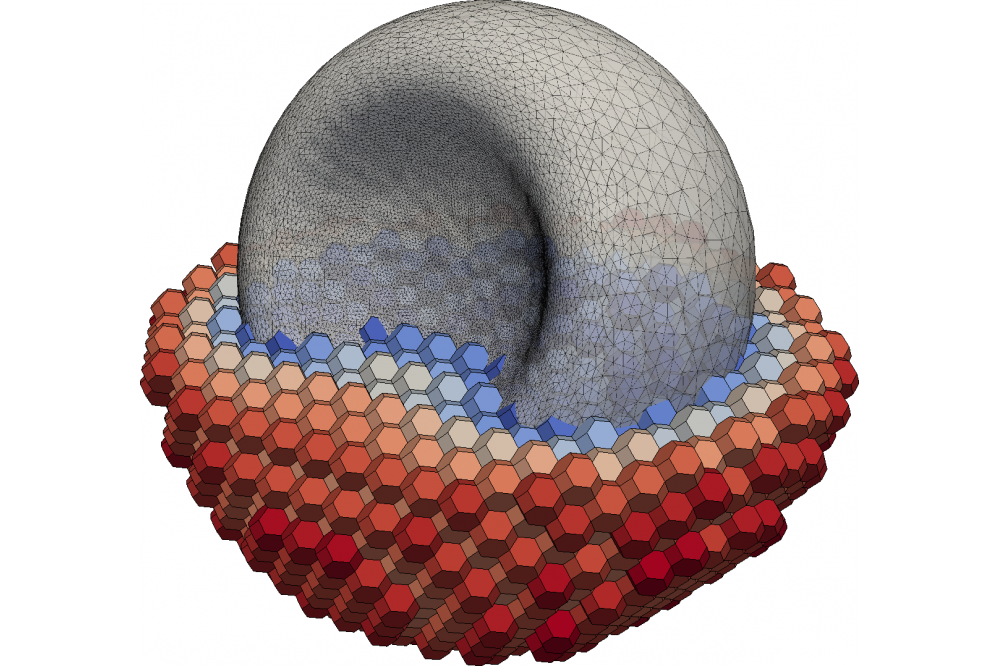Lagrangian / Eulerian Interface Approximation (LEIA)
Introduction
Accurate and efficient tracking of sharp interfaces that separate fluids that do not mix or fluids and solids is a challenging and still active research topic. Two numerical methods tracking interfaces mix are developed within this project: the geometrical Volume-of-Fluid (VOF) method and the hybrid Level Set / Front Tracking method (LENT).
Methods
The VOF method approximates the fluid interface using a piecewise-linear geometrical approximation. The interface is approximated as a plane in each cell of the discretized domain that is intersected with the moving interface. This piecewise-planar interface is then evolved using a finite volume discretization. The reconstruction of the finite volume flux is based on geometrical intersections between the face of the fine volume that are swept backwards in time along Lagrangian trajectories, and the piecewise-planar interface.
The LENT method approximates the fluid interface using a linear approximation: a triangular surface mesh. The triangular surface mesh is a discrete zero level set of a signed distance that is computed in the near vicinity of the interface, and updated as the interface evolves. The surface mesh representation and purely Lagrangian evolution of the interface increase the accuracy, and the signed distance field greatly simplifies topological changes, that are handled via the iso-surface reconstruction.
Results
The VOF method was developed up to a point where a fluid interface can be tracked with second order accuracy on unstructured meshes in parallel, using the message passing parallel programming model. Next steps in the development will ensure the accuracy is kept at the boundary of the solution domain and in the computation of the surface tension force. The hybrid LENT method turned out to be more challenging in terms of parallelization, because the fluid interface is approximated by the LENT method as a set of mutually connected triangles (a triangle mesh), which is exceptionally difficult to communicate, because it requires complex topological operations in order to be sent and received to and from MPI processes.This method was therefore first developed further in terms of simulating two-phase flows, by accurately approximating the solution of the Navier-Stokes equations. Next step for the LENT method is the disconnection of triangles in the surface mesh and the second attempt at an efficient parallelization using the message passing parallel programming model.
Discussion
Both methods rely on geometrical representations of the fluid interface that is spatially and temporally local, which makes the parallel implementation spatially and temoporally heterogeneous, moreso because the underlying data is unstructured. Because of this, an efficient parallel implementation of those methods is a research topic in itself. This is the main reason for using HPC resources in this project: testing the parallel implementation on a relatively small number of processes at first, and running parameter variations to find out which algorithms work and which do not.




